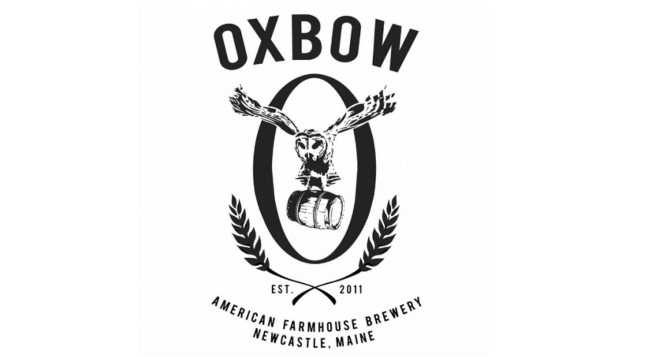Rediscovering Barrel-Aged Beer at the Side Project Invitational
Photos via Side Project Brewing, Jim Vorel Drink Features craft beer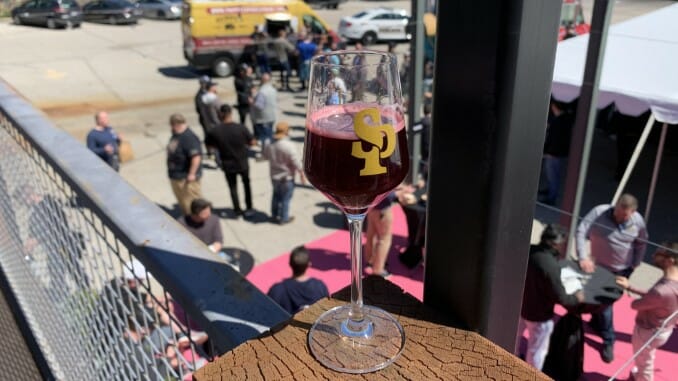
Prior to this past weekend, the last time I’d found myself pressed in a throng of beer geeks, waiting in a long line to taste some new example of barrel-aged imperial stout, the year was 2019. It was summer, and for the fifth year in a row I had traveled from Paste’s Atlanta headquarters to attend the Firestone Walker Invitational, immersing myself in some of the best beer on the planet, as curated by the brewery we’d eventually choose as the greatest of the 2010s. I had no idea at the time that nearly three years would pass before I’d find myself in a similar setting.
That idea, at the time, would have seemed patently absurd to me—an impossibility, that three years would somehow pass without participating in the odd, communal experience that is a large-scale beer festival. If you’d told me as much then, I probably would have joked that the world must be ending in the next few years, to so thoroughly cut me off from the cutting edge of the beer world. And my joke, sadly, would have been far more accurate than I could ever have realized.
The COVID-19 pandemic, suffice to say, effectively made the “beer festival” as we know it a completely untenable proposition. As the virus spread, large events of all kinds of course went by the wayside, but it’s hard to imagine a type of event more poorly suited to the era of pandemic than a giant, inebriated beer fest, in which mitigation techniques such as masks and social distancing are all but impossible. Only now, more than two years after the initial spread of the virus in the U.S., have we reached a place in terms of vaccination and immunity where a good number of attendees feel comfortable in taking the risk to once again communally celebrate the world of beer.
But ah, that world has changed demonstrably since the summer of 2019, has it not? Back then, the hard seltzer boom was just reaching for pop culture omnipresence, and I’d only relatively recently begun to develop misgivings about the unchecked, runaway evolution of hazy IPA. The pandemic era, meanwhile, saw many writers, myself included, effectively withdraw from engaging in a lot of national beer coverage, instead focusing on better knowing and supporting our struggling locals in a time when they most needed the help. It’s entirely fair to say that during this era, I’ve fallen significantly out of touch with the national beer geek zeitgeist, that old pursuit of hype I knew so well back in the mid-2010s. These days, I can tell you in great detail about any of the more than 40 small breweries in the greater Richmond, VA area, but I’m much more likely to struggle in listing which barrel-aged stouts are commanding top dollar for beer traders.
And that’s part of the reason why attending the 2022 Side Project Invitational last weekend immediately felt so important to me. After three years or so away from the world of hype beer and the brewing avant garde, it seemed like a vital opportunity to check in with the wider world of exceptional barrel-aged brewing, to remind myself of many of the beers I’ve been missing—not to mention the festival experience itself.
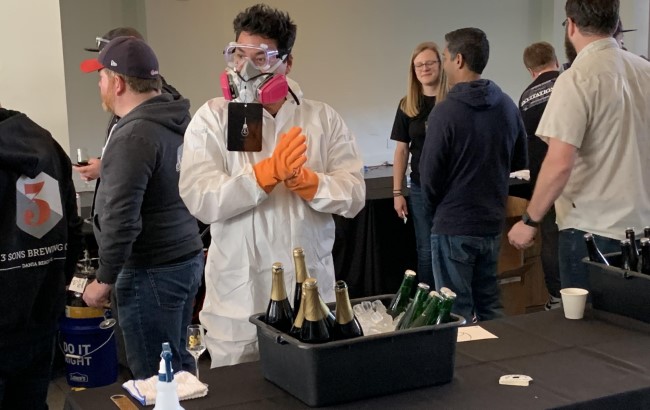 Perennial Artisan Ales owner Phil Wymore prepares to pour something potentially … hazardous?
Perennial Artisan Ales owner Phil Wymore prepares to pour something potentially … hazardous?
Because in terms of a lineup, is there any brewery in the U.S. who one would expect to put together a more impressive roster of participants for a festival than the likes of St. Louis’ Side Project Brewing? Long considered one of the best pure makers of wild ales and imperial stouts in both the U.S. and beyond, Side Project is the rare brewer that has managed to maintain its mystique even as it has grown into a (slightly) larger company, over the course of almost a decade—an eternity in terms of hype, for this industry. I personally have witnessed regiments of bearded men, not hustling but sprinting across festival grounds to be the first in line for a Side Project pour. Who better to curate an invitational, taking on the quality-first format of festival that has become so widespread in the years since Firestone popularized the concept? I can think of no one in the industry who would inspire greater devotion at such a festival than the likes of Side Project leaders Cory and Karen King, and the response from all the breweries involved this past weekend made it clear just how much fondness there really is for the St. Louis standard bearers.
At the same time, the experience was also a fond reminder for myself, a memory of what it’s like to be in a room surrounded almost entirely by brewers and brewery owners as they laugh, cajole and harangue each other over shared jokes, controversial beer opinions and the existential business challenges they’ve all faced in the last few years. In such a setting, it’s impossible to go a few feet without drifting through snatches of heated technical discussion, as one brewer proselytizes on the virtues and deficiencies of various pieces of stainless steel, while another rants on the overuse of a specific hop varietal or the sheer fickleness of consumers. I was reminded of several tropes of professional brewers that never seem to go out of fashion, from their unironic love for easy drinking macro lagers (especially in the context of a 106-year-old bowling alley post-festival), to their propensity to covet rare bourbon, like so many other beer geeks who made the beer-to-spirits transition in recent years. Suffice to say, when someone broke out the Willett Family Estate Bourbon in the middle of the welcome party, people dropped what they were doing to get some.
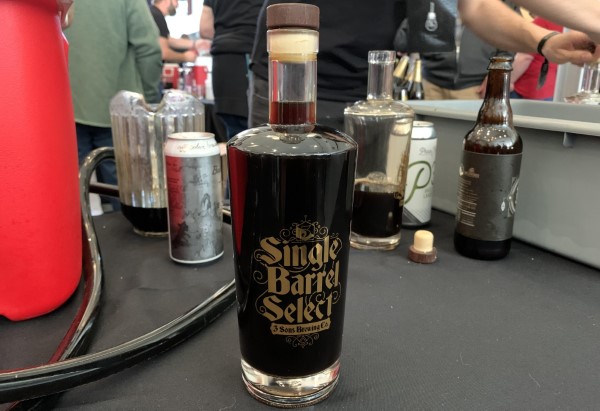 There was also beer PACKAGED in bourbon bottles, like this inky, uncarbonated barleywine from Florida’s 3 Sons Brewing.
There was also beer PACKAGED in bourbon bottles, like this inky, uncarbonated barleywine from Florida’s 3 Sons Brewing.
At the end of the day, though, this was an unrestrained celebration of barrel-aged beer first and foremost, and those beers presented themselves in an awe-inspiring gamut that included everything from the omnipresent imperial stouts to delicate wild ales, puckering sours, exceedingly funky lagers and beyond. I tasted many small drams that stood out vividly in one way or another, but couldn’t possibly take notes on all of them. Assembled below, however, are some of the most memorable pours of the 2022 Side Project Invitational, and they speak to both where these styles have been and how much they’ve evolved since the last time I was able to gather with a few hundred people in pursuit of new flavor experiences. Here’s hoping that it won’t be another three years before we’re able to do this again.
10 Memorable Beers From the 2022 Side Project Invitational
One might expect a “festival of oak-aged beer” to be dominated almost wholly by the likes of imperial stout and mixed culture sours, and … well, there were undeniably a lot of those beers present. Looking around, though, there were definitely some oddities in the fringes—wild ales both funky and surprisingly clean, a few hop-forward selections, and even some oak-aged lagers, including an astoundingly complex bottle from Chicago’s Off Color Brewing that was primarily doppelbock of all things. These beers gave the 2022 Side Project Invitational a much-appreciated sense of balance, and a safeguard against 50 iterations of pastry stout—my appreciation for that knows no bounds. So with that said, let’s talk about some beers.
Shared Brewing — Content Moderator LagerABV: 5.5%
Shared and Side Project go hand in hand, as the former is a subsidiary that allows various Side Project brewers to create their own brands and recipes (and retain ownership) on the side, reflecting the way that Cory King began Side Project while working for St. Louis’ own Perennial Artisan Ales. Shared Brewing beers are therefore served at Side Project locations right alongside the Side Project beers, and they also manage to fulfill a role of exploring other styles that Side Project doesn’t usually touch. That includes this non-oak-aged lager that I simply couldn’t help but include, given that it was honestly one of the best things I tasted all weekend. Brewer Drew Durish apparently refers to this as a “Texas-inspired corn lager,” but that feels like a massive undersell when the reality is that this beer would perform beautifully in any tasting of classic German pilsner. Floral, snappy and wonderfully crisp, with all the noble hop flourish you could possibly want to balance out all those big stouts, Content Moderator was the beer I secretly continued to crave all weekend long. It deserves recognition alongside all the bruising stouts and barleywines.
Jackie O’s Brewery — Temple of MinervaABV: 14.6%

An unfortunate truth of a festival setting like this one, in which so many of the beers are heavily hyped, sought-after bottles that on any other day are being used as trade bait, is that even a 14.6% ABV imperial stout that spent 22 months in bourbon barrels can look rather blasé to the rank-and-file festival attendee … especially when it’s a couple tables over from a stout filled with coconut, banana and vanilla. That’s nothing new for Arthur Oestrike’s Jackie O’s, though, as they’ve always been a brewery that has both excelled at the delicate art of barrel-aging and blending, and largely done it without the ostentatious use of adjuncts as a crutch. As such, there were few beers at the festival I was more keen to taste than this classic, adjunct-free, blend of imperial stouts, which were then aged for 22 months in used bourbon barrels. The prototypical “iron fist in a velvet glove,” Temple of Minerva features no overpowering elements, but instead a masterful harmony between burly, roasty, dark fruity stout and fudgy, luscious vanilla and roasted nuts. If you’re looking for a baseline of what barrel-aged imperial stout is meant to be like, let it be this.
Keeping Together — Creatures of Infinite ContradictionABV: 8.7%
My ignorance of this tiny Chicago operation is a good example of how my knowledge of the up-and-coming brewing scene has atrophied during the pandemic, but I was pleasantly surprised to find that the original Half Acre brewery on Chicago’s Lincoln Ave. had given birth to Keeping Together, a project from former Jester King head brewer Averie Swanson, born in Chicago but currently in the process of moving to Santa Fe, New Mexico.
Keeping Together is a brand devoted to thoughtfully considered wild ales, and Creatures of Infinite Contradiction is a great example. This is an 8.7% ABV barrel-aged saison, refermented with massive amounts of Cabernet Franc and Merlot grape must from Washington state. Given the amount of grapes involved, one might expect the result to be a true juice bomb, but the beer is instead quite delicate and very drinkable—not the aggressively tart or funky wild ale one might expect either, but gently wild and subtly earthy. The fruit character makes it extremely round and lightly jammy, smooth as the skin of the grape itself, with dark fruit notes of currant, blackberry and slight citrus. This isn’t the piercing, acidic lance of a fruited sour, but more a true beer-wine hybrid that evokes the approachability of Italian Lambrusco.
Pips Meadery — Barrel Aged Heart & SoleABV: 12%
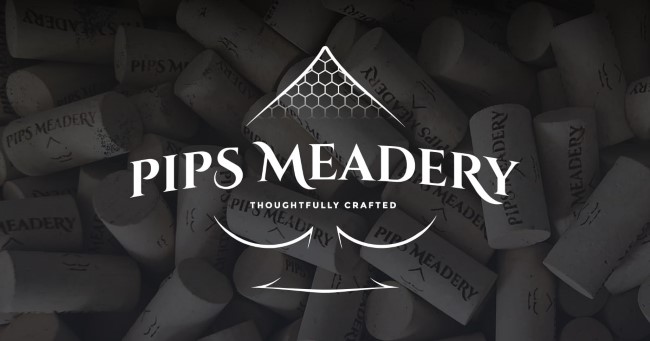
The immediate talk of the festival, and a complete mystery to me upon arrival, Pips immediately illustrated how very little I’ve been aware of the massive hype that has been built among beer geeks for heavily fruited mead. As the festival started, a huge line immediately wrapped itself around the entire outdoor tent, aimed squarely at Pips. Utterly fascinated by this devotion to one of the only non-beer products being poured at the fest, I began interviewing people in line. Some were intense beer geeks, who told me that the fervor for Pips was built out of extremely limited quantities and the difficulty of acquiring it. Others had no idea what they were in line for, but queued with that universal human mentality of “if people are waiting for this, then it must be good.” It was only later that I found that Pips is currently the number one rated brewing entity on Untappd, and the margin isn’t even close. These guys have a type of hype that puts them in extremely rarefied air.
As for the actual product they were pouring, Barrel Aged Heart & Sole is a fruited mead (a melomel, in other words) made with blueberries, cashews and toasted coconut, aged in Knob Creek barrels for five months. I must conceded that the nose is truly incredible—it smells like the most perfect replica of a baked goods counter that I’ve ever come across in an alcoholic beverage, like someone figured out a way to distill the essence of a buttered blueberry muffin into a tincture. On the palate, meanwhile, things take a turn for the intensely sweet and syrupy—I guess I shouldn’t be surprised that this is the current vogue, given that beer geeks have been overwhelmingly consumed by a quest for saccharine stouts and IPA in recent years, but I still have to admit I was somewhat disappointed. There are incredible fruit and confectionery flavors on display here, but it’s really difficult for me to properly appreciate them when the level of residual sugar is staggeringly high. There are clearly many, many folks who disagree if the other reactions I gauged at the festival are any indication. I realize that this puts me in the minority among certified beer geeks, but this is my honest opinion.
Oxbow Brewing Co. — Secret PatternsABV: 5.3%
I have pretty much always been, and remain a sucker for stone fruit sours, and this was arguably the most delicious one I encountered at the Side Project Invitational. Oxbow Brewing of course excels at this sort of mixed fermentation masterpiece: This one is a blend of stainless aged mixed fermentation and barrel-aged farmhouse wheat beer, aged on apricots, but also aged with Maine wildflower honey. The result is quite bright, quite tart and quite funky, revealing the delicate floral notes of the honey alongside the hedonistic scent of fuzzy apricot skin at the very peak of freshness. The results are ethereally beautiful—never overwhelming or guileless in the intensity of its delivery as too many of these “QUAD FRUITED” sours now become. It’s a beer impeccably suited to outdoor drinking in the crisp, sunny weather of spring.
Hair of the Dog Brewing Co. — Barrel Aged Doggie ClawsABV: 11%
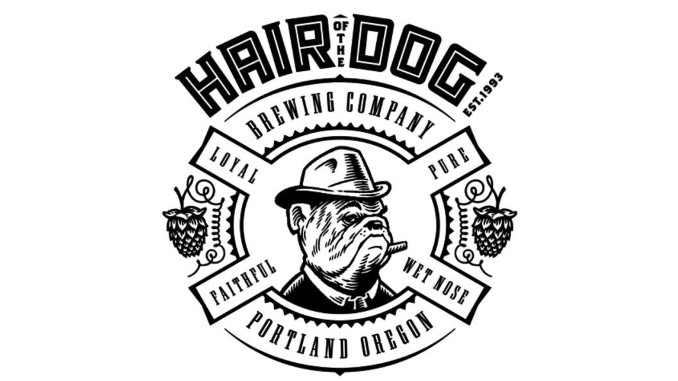
One of the highlights of this festival was meeting face to face an industry figure I’d only ever known as a distant name, Hair of the Dog Brewing Co. founder Alan Sprints. Back in February, Sprints announced that his pioneering Portland, Oregon beer institution, in business since 1993, would be closing up shop with his retirement, sending ripples of surprise through the beer world. Hair of the Dog has always been a brewery whose influence greatly outstripped its size—it’s a very small operation, but its pioneering work in advancing styles such as American-style barleywine and barrel-aged strong ales gave it cult status and countless awards over the decades. In all that time, I’m not sure I ever actually had a chance to taste Hair of the Dog beer as an East Coast resident, so this was an invaluable opportunity to do exactly that before Sprints departs to enjoy his retirement.
And I must say, I always enjoy when one of the breweries at a festival like this seems to size up what everyone else will likely be pouring, and then consciously elects to do the opposite. In a field almost entirely without hop-forward beer, Hair of the Dog presents a bourbon barrel version of Doggie Claws, a bitter and resinous, old school West Coast barleywine, completely unlike pretty much every other beer from the 50 breweries in attendance. Malt-forward, moderately sweet, toasty and boozy, its hop profile evokes pine needles and orange marmalade, taken to another level by tart oak and toffee from the barrel. This was a most welcome throwback.
Firestone Walker Brewing Co. — Collective Choice 2022ABV: 11.6%

Firestone poured several beers at the festival, including a version of Parabola at one point that was aged in Pappy Van Winkle bourbon barrels, but the scene-stealer was really this year’s version of Collective Choice, a beer assembled via audience feedback from the brewery’s membership club, the Brewmaster’s Collective. I’m on the record in the opinion that committee thinking is rarely something that leads to a bold or innovative result, but somehow it produced a gem here—a blend of two imperial stouts (Parabola and Velvet Merkin) treated with an array of adjuncts that included vanilla, cocoa, cardamom and sea salt.
Those flavors pretty obviously suggest a “Turkish coffee-style” stout, as the cardamom is often used in that particular flavor combination, but in execution the beer evolves past that expected profile and goes in some unique directions. The black cardamom used has an oddly minty or menthol-like character to it, which, when combined with the cocoa and background stout elements suddenly (and deliciously) evokes Thin Mint cookies. The texture, meanwhile, is surprisingly light and drinkable for a stout of this weight, with alcohol that is incredibly well incorporated and largely hidden. Captivating, full of flavor, and a testament to the blending expertise at Firestone.
Sante Adairius Rustic Ales — West Ashley CuvéeABV: 7.3%

Sometimes you just have to take a step back and marvel at the sheer amount of labor and artistry that goes into making a beer like this one. The base beer, Sante Adairius’ West Ashley, begins as a “simple saison,” aged in French oak pinot noir barrels, but while it’s spending that time on wild yeast it’s also resting on apricots. West Ashley Cuvée, on the other hand, is a blend of FOUR CONSECUTIVE YEARS of West Ashley releases, all of which were aged the entire time in pinot noir barrels on apricots. As they specify, “this is not simply a blend of base beer with apricots at the end, but a true blend of fruit, time and complexity like we’ve never before attempted, and may never again.” The final blend is an even split, 25% of each component.
Suffice to say, the result takes the complexity of one wild ale and just increases its nuance exponentially, making something pristine and many faceted, like a diamond carved from an apricot. Delicately funky, earthy and sparkling with all the toil and love put into those barrels over the course of four years, it’s a revelation. It’s also quite pleasant on a warm day, and particularly in between sample after sample of barrel-aged stout.
Off Color Brewing — Avec le GuillotineABV: 7.8%
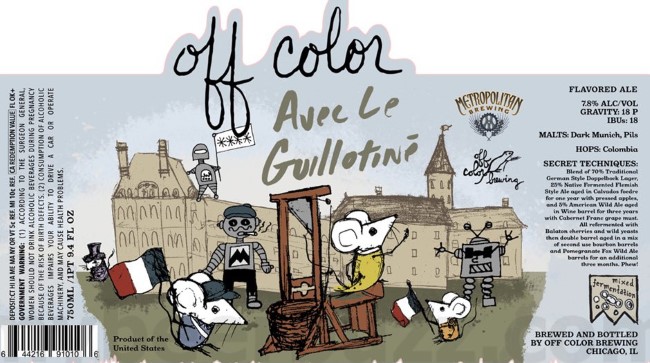
I don’t think there’s any doubt that Off Color Brewing and its founder John Laffler—who was celebrating a birthday at the festival—produced one of the most unique and fascinating beers of the Side Project Invitational, brewed in collaboration with Chicago’s Metropolitan Brewing. Avec le Guillotine is such a fiendishly complex concept that it’s difficult to even explain it succinctly, so I’ll simply stick to their words:
It’s a blend of 70% traditional Doppelbock Lager and 25% Native Fermented Flemish Style Ale aged in Calvados Foedres for one year with pressed apples and 5% American Wild Ale aged in wine barrels for three years with Cabernet Franc grape must. All of this was then refermented with Balaton cherries and wild yeasts before being double barrel aged in a mix of second use bourbon barrels and Pomegranate Fox barrels for an additional three months.
That is a lot to take in, and the beer is just as moody and mysterious as you’d expect. Tangy, slightly soured dark maltiness tangles with sour cherry and darker fruit notes, wrapped up in drying oak and tannin. A beer that absolutely demands contemplation.
Holy Mountain Brewing — Hand of GloryABV: 13%
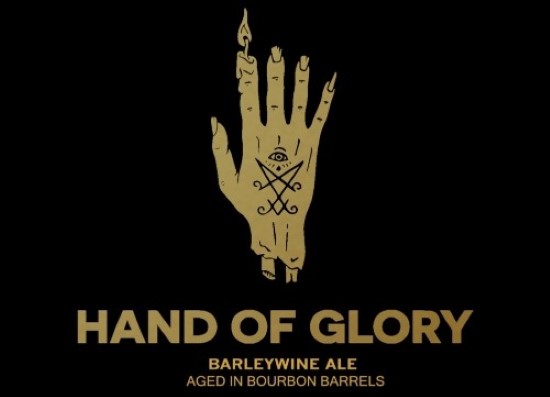
I’m of the opinion that there’s perhaps no style that takes to a bourbon barrel more decadently and ultimately produces a more luscious result than English-style barleywine—the combination of dark/dried fruitiness and sweetness already present in the base beer pairs immaculately with the vanillans, caramel tones and oak you’re attempting to wrest from the wood. Seattle’s Holy Mountain goes one step further on this beer by having it spend its first six months in bourbon barrels, before then transferring it to French cognac casks for another 14 months.
The results? Pure hedonism, at its best. This was the most irresistible of all the “desserty” barrel-aged beers I came across at the festival, not saccharine in its sweetness but incredibly rich and nuanced. Massive notes of dried fruit duke it out with maple syrup ice cream, cocoa and dark fruit compote. It’s absolutely huge in terms of flavor and texture, and it tastes like liquid indulgence. This is like what you imagine tycoons drinking in their parlor in front of a roaring fireplace, surrounded by trophies and animal pelts. It tastes like something that only someone living “the good life” would ever be able to acquire.
Jim Vorel is a Paste staff writer and resident craft beer geek. You can follow him on Twitter for much more drinks writing.


